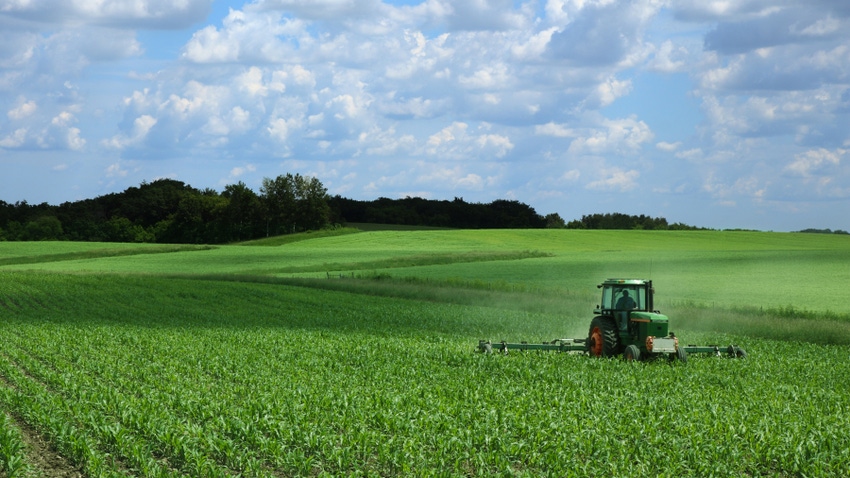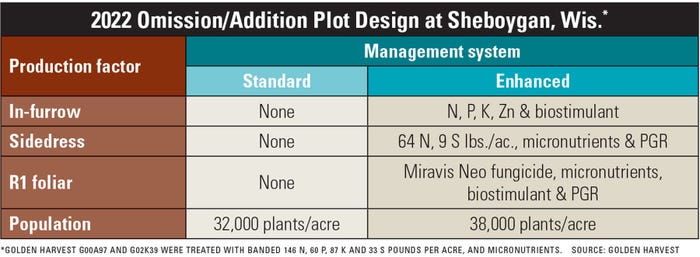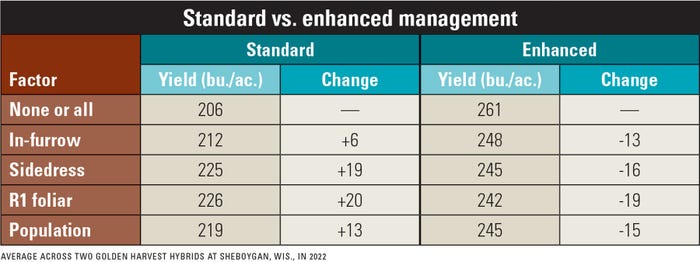
Whether in farm business or the corporate board room, everyone has their own management style. But when it comes to how you manage your corn crop, that style can dictate whether you realize untapped yield potential.
As the agronomic research scientist at Syngenta, Brad Bernhard is responsible for on-farm crop trials testing different hybrids in different environments. Over the past two years, he looked closely at how hybrids perform based in two management styles — standard versus enhanced grower practices.
The farmer’s standard practice assumes a normal fertility practice and no fungicide application. An enhanced management style uses the farmer standard plus additional fertility, nitrogen and fungicide while increasing plant population.
Bernhard says for 2023, farmers looking at areas to spend money and enhance management, based on the on-farm trials, should look at UAN sidedress application and foliar fungicide.
Multiple-year results
In 2021, the first year of the enhanced management style trials, Bernhard found an average 19-bushel yield response across eight Midwest testing locations. Each plot used the following enhanced management system:
precision fertilizer placement — in-furrow, 2 x 2 x 2 and surface dribble bands
nitrogen at 70 pounds applied with the planter and another 60 pounds sidedressed
fungicide applied at R1
planting population at 34,000 plants per acre, identical to standard management
There were a wide range of responses, depending on location. “In Nebraska, we really didn’t see any yield enhancement from that system,” Bernhard notes, “but it is also a very high-yielding location.” However, at the Geneseo, Ill., location, yields reached upward of a 51-bushel difference under intensified management.
Bernhard cautions that yield increases also varied by hybrid, with some being more responsive to fertilizer placement and fungicide.
In 2022, he dug deeper, creating trials that looked at hybrid response to management style. Whether early-, mid- or late-season corn hybrids, all but one hybrid in Minnesota saw a positive increase in yield from the enhancement management system. This ranged from -2 bushels for one hybrid in Minnesota to +78 bushels with G15J91 in Illinois.
The total enhanced managed system worked to increase yield, but with the rising cost of inputs, Bernhard assessed exactly which enhanced management factor affected yield the greatest with an omission and addition plot design.
Assess value of inputs
The omission-addition plot design takes the standard system and adds one of the enhanced management practices at a time to it, such as in-furrow application, to determine if and how much yield is gained from each one of those management practices.
On the flip side, Bernhard explains, the omission trial takes the full enhanced system and removes one at a time to determine how much yield is lost when removing just one of those factors.
Here is an example of the management system trials at Sheboygan, Wis.

Below is the on-farm trial omission-addition plot from the same Wisconsin location featuring two Golden Harvest hybrids.

Expanding on-farm trials
Bernhard says the purpose of these enhanced management trials and omission-addition plots is to show farmers that they can either select corn hybrids that perform well under their management style or adjust their management system to fit their hybrids.
“Management is really all about a systems approach,” he adds. “It is about finding the right hybrid on the right acre with the right management to maximize yield potential.”
One of the best ways to find what works is on-farm trials. Golden Harvest has plots in Missouri, Illinois, Iowa, Wisconsin, Minnesota and Michigan, but Bernhard continues to look for farmer-operators to gather more data.
“Reach out to your Golden Harvest team,” he says. “We are always looking for more trials.”
About the Author(s)
You May Also Like






